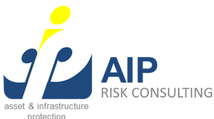
Cybersecurity
Cybersecurity is the practice of protecting systems, networks, and programs from digital attacks.
These cyberattacks are usually aimed at accessing, changing, or destroying sensitive information, extorting money from users, or interrupting normal business processes.

Key Components of Cybersecurity
Network Security
- Protecting the integrity, confidentiality, and accessibility of computer networks.
- Techniques include firewalls, intrusion detection systems (IDS), and intrusion prevention systems (IPS).
Information Security
- Safeguarding the confidentiality, integrity, and availability of data.
- Techniques include encryption, data masking, and access controls.
Endpoint Security
- Protecting devices like computers, smartphones, and tablets that connect to the network.
- Techniques include antivirus software, anti-malware, and endpoint detection and response (EDR).
Application Security
- Protecting applications from threats that can exploit vulnerabilities in code or architecture.
- Techniques include secure coding practices, code reviews, and application firewalls.
Cloud Security
- Protecting data, applications, and services that are hosted in the cloud.
- Techniques include cloud access security brokers (CASB), cloud security posture management (CSPM), and cloud workload protection platforms (CWPP).
Identity and Access Management (IAM)
- Ensuring that only authorized individuals have access to systems and data.
- Techniques include multi-factor authentication (MFA), single sign-on (SSO), and role-based access control (RBAC).
Operational Security (OPSEC)
- Protecting the internal processes and procedures of an organization.
- Techniques include risk management, incident response planning, and security awareness training.
Disaster Recovery and Business Continuity Planning
- Ensuring that an organization can continue operating after a cybersecurity incident.
- Techniques include backup and recovery strategies, business continuity plans, and disaster recovery testing.

Types of Cybersecurity Threats
Malware
- Malicious software designed to harm or exploit devices, services, or networks.
- Includes viruses, worms, Trojans, ransomware, and spyware.
Phishing
- Attempts to deceive individuals into providing sensitive information by masquerading as a trustworthy entity.
- Often carried out via email, instant messaging, or social media.
Man-in-the-Middle (MitM) Attacks
- Eavesdropping attacks where the attacker intercepts and relays messages between two parties.
- Techniques include session hijacking and HTTPS spoofing.
Denial-of-Service (DoS) Attacks
- Attempts to disrupt the normal functioning of a network, service, or website by overwhelming it with a flood of illegitimate requests.
- Distributed Denial-of-Service (DDoS) attacks are a more severe form using multiple systems to attack a single target.
SQL Injection
- A code injection technique that exploits vulnerabilities in an application’s software by inserting malicious SQL statements into entry fields.
- Can be used to manipulate or access the database.
Zero-Day Exploits
- Attacks that exploit previously unknown vulnerabilities in software, for which no patch has yet been developed.
- Highly dangerous due to the lack of available defenses.
Advanced Persistent Threats (APTs)
- Long-term targeted attacks aimed at stealing sensitive information over an extended period.
- Often involve sophisticated techniques and are carried out by well-resourced threat actors.

Key Cybersecurity Practices
Regular Software Updates and Patch Management
- Ensuring all software is up-to-date to protect against known vulnerabilities.
- Automatic updates and regular patching are crucial.
Strong Password Policies
- Implementing policies that require strong, unique passwords.
- Encouraging the use of password managers and multi-factor authentication (MFA).
Security Awareness Training
- Educating employees about the latest threats and safe practices.
- Regularly conducting phishing simulations and awareness programs.
Data Encryption
- Encrypting sensitive data both at rest and in transit.
- Using strong encryption protocols and key management practices.
Access Controls
- Implementing strict access controls to limit who can access sensitive information.
- Utilizing role-based access control (RBAC) and the principle of least privilege (PoLP).
Incident Response Planning
- Developing and testing a response plan for cybersecurity incidents.
- Ensuring that there is a clear protocol for detecting, responding to, and recovering from incidents.
Regular Security Audits and Penetration Testing
- Conducting regular audits to assess the security posture of the organization.
- Performing penetration testing to identify and address vulnerabilities.
Conclusion
Cybersecurity is an essential practice for protecting the digital infrastructure, data, and operations of an organization. By implementing comprehensive security measures and staying vigilant against emerging threats, organizations can significantly reduce their risk of cyberattacks and ensure the integrity, confidentiality, and availability of their systems and information.

